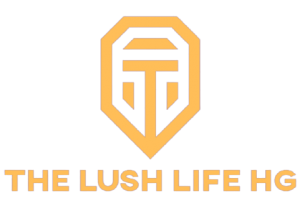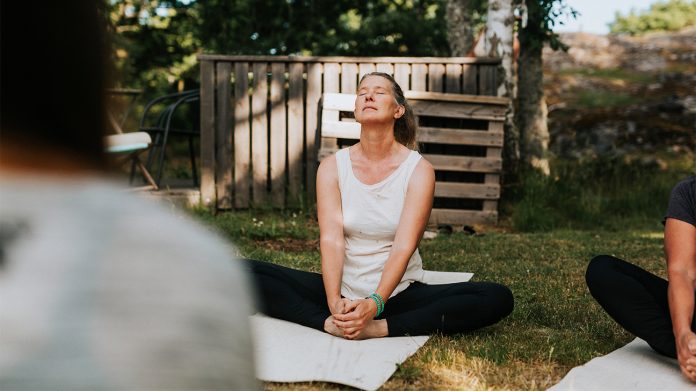In your 50s, 60s, or even 70s, it’s not too late to put yourself first and make your health a priority.
How do you get started on a health and fitness journey in older age? Rather than focusing on goals that feel unattainable or unsustainable, you’re better off focusing on lifestyle activities that will keep you active and exploring — and allow for fun.
Connie Smith, the Healthy Living Director for Florida’s First Coast YMCA, says to just try something new.
“Try something different that you’ve never done before, every single month, and it’ll keep you going,” Smith says.
But don’t let the big number overwhelm you before you begin. If you start small and find out what you like, you’ll see there’s an exercise for you that doesn’t even feel like exercise.
Here are a few ideas to get you started.
Don’t be intimidated to throw some weight around. Weight training, strength training, or resistance training — however you want to refer to it — is vital for optimal health.
Older adults especially benefit from a reduced risk of injury and falling, greater ease in everyday tasks, and improved mood, mobility, and mental function — all as a result of strength training (3).
“It helps with living,” said Jermaine Solomon, a personal trainer and the owner of the Maximum Effort Fitness & Performance Training.
He trains clients at both a retirement community and his own gym and often incorporates weights into their fitness regimens. “When you just sit down and stand up, but you’re holding weights as you do it, that goes a long way,” Solomon said.
You can also just work with your own body weight. Smith said, “If you’re looking to lose just a little bit of weight, body weight is really great for the joints.” Using a variety of weights in varied exercises allows you to make this part of your fitness journey and keep it unique.
Jumping in the pool for a round of aquatic sports is another way to kick-start your fitness routine. In addition to being cardiovascular exercise, swimming gives you a strength workout because of the resistance of the water (4Trusted Source).
If you prefer doing something more fun in the pool rather than just swimming laps, try aqua aerobics. It gives you the benefits of swimming and group fitness all at once.
Smith said, “Aqua aerobics is just fabulous for this age group.” The resistance of the water plus the cushion it provides for reduced impact on the joints allows you to gain strength in a way that minimizes aches and pains.
Zumba is a great activity for those who love to dance. Combining dance moves with an aerobic workout, Zumba is a way to get your exercise in without feeling like you’re exercising.
“You don’t think about the fact that you’re exercising,” Solomon said. “Some people dread the word exercise and so that feeling definitely makes it a lot better.”
When it comes to working out to strengthen your body and clear your mind, there’s no better activity than yoga. It can be done alone or in a group setting, indoors or outdoors, with puppies, babies, or even goats.
Yoga checks the box when it comes to resistance training because you’re moving and holding your body weight through the asanas. It also helps with balance and mobility as we age (5, 6).
Smith said she recommends yoga for people in their 50s and 60s who are working to reset their lives.
“You can start with chair yoga if you don’t want to get on the ground,” she said. However you feel most comfortable starting, give it a shot. Smith added, “Yoga gives you that mental balance that goes along with some of the stuff that’s happening in life… yoga has a lot to do with giving back to yourself.”
Running is one of those exercises you either love or hate. However, for those who love it, there’s no reason to stop as you age. While running is not low impact and can stress the knees and other joints, Solomon said you may want to switch to a treadmill to decrease the impact.
But if you love the mental clarity you gain from being outdoors and exercising in the fresh air, perhaps hiking is more suitable for you.
You’ll burn more calories than walking alone, and the benefits of being outdoors include improved mood, self-esteem, and emotional response, as well as decreased fatigue while exercising (7Trusted Source, 8Trusted Source).
Biking can be done either indoors or outdoors. Smith notes, “A spin class at any age is not only a fabulous thing from a cardio standpoint, but also for the mental health piece… you’re in that dark room and you can just let life go for 45 minutes to an hour.”
If a traditional bike or spin class isn’t right for you, try a recumbent bike. Many now have a screen attached, allowing you to watch Netflix or stream other content. Solomon says just make sure you’re not so focused on the TV that you forget you’re supposed to be exercising.
Horseback riding works up a sweat, engages your joints, muscles, and core, and allows you to be outdoors and commune with the animal and nature. Again, you might even forget you’re exercising when you’re on the back of a horse, feeling the breeze as you ride.
For people who want to prep themselves to ride horses, Smith suggests visiting a personal trainer first. “If you’re doing things like horseback riding, you’ve got to be able to figure out how to get on the horse. So, we’ll do things like hip openers and strengthen you so you can get on the horse.”
If participating in trendy fitness exercises of the moment is not your thing, maybe you’d prefer to work toward a goal on your bucket list. Smith said she’s trained people in their 50s and 60s to hike the Great Wall of China, scuba dive in the Great Barrier Reef, or even climb Mount Kilimanjaro in Africa.
For these out-of-the-box fitness activities, you have a definitive goal you’re trying to reach. Smith says finding exercises tailored to reaching that goal will help you stay motivated to achieve the accomplishment.
When training for a mountain trek, for instance, she recommends taking fitness classes that focus on breath work and use the Jacob’s ladder apparatus to get you used to climbing.
“The Jacob’s ladder is actually a moving ladder, so you’re holding on with your feet and your hands and you’re kind of climbing. This is one way to allow you to simulate rock climbing














